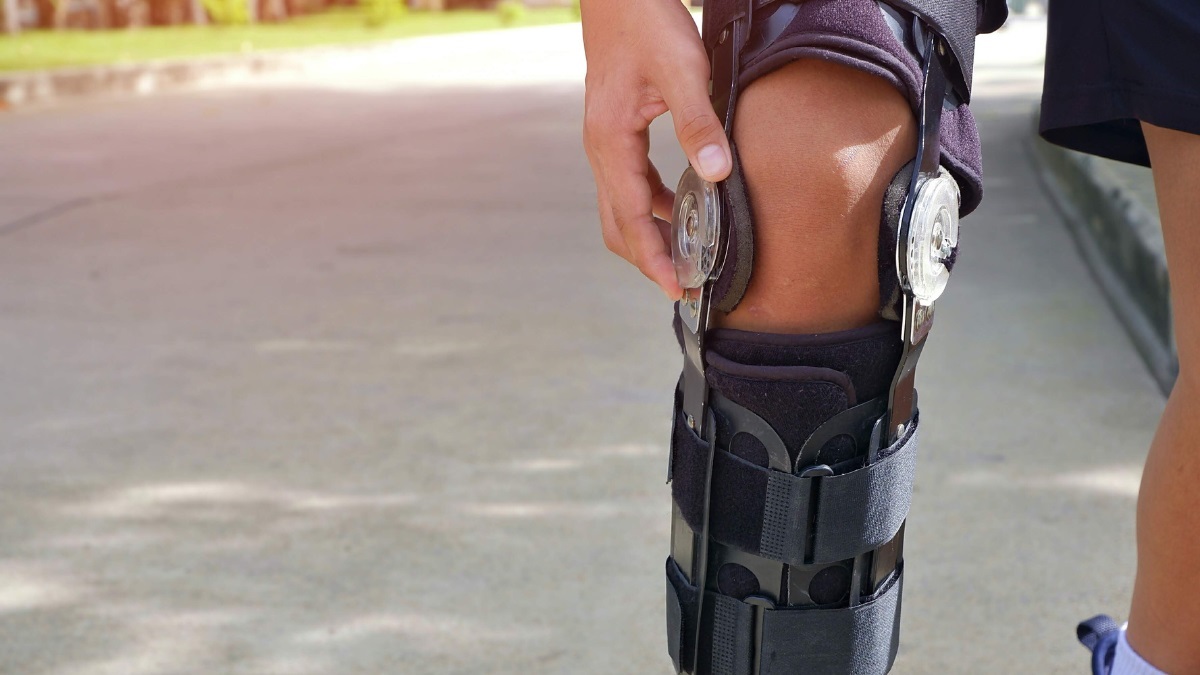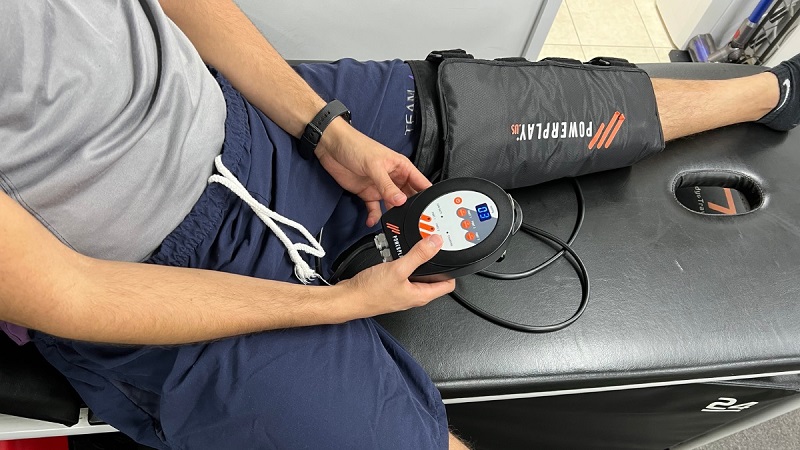The ACL is considered the primary stabiliser of the knee joint contributing to about 85% of knee stability (Grey et al, 2017).
It has the role of limiting anterior translation of the tibia on the femur, optimising rotational stability of the knee joint and preventing the knee from “giving way”. In addition, the ACL contributes to proprioception of our knee, enabling good joint awareness, balance and agility.

An ACL tear can be diagnosed by a physiotherapy examination, and our physio team are highly competent and trained in diagnosing these ACL injuries. Initial diagnosis is made both from the subjective history and a comprehensive objective examination, and then confirmed typically via an MRI.
How often is it injured?
During the winter sporting season in our clinic we typically see a spike in ACL injuries presenting to us for care which includes conservative (non-operative treatment, pre-op rehab and post-op rehabilitation.
Current rates of ACL injury:
Australia has the highest reported rates of ACL injury in the world, and this rate has risen 70% in under 25s over the last 15 years (Zbrojkiewicz et al., 2018), with females having almost double the risk of having an ACL tear compared to males.

Signs & Symptoms
- Usually non-contact – cutting/changing direction or landing from a jump
- Felt a pop in the knee
- Rapid swelling – restricted ROM
- Feeling of instability or giving way
- Confirmation with MRI

Risk Factors
- Sports involving running, jumping, pivoting/changing direction
- Poor knee/hip control
- Weak hamstrings
- Poor biomechanics – including lower kinetic chain dysfunction

Diagnosis / Assessment
- A positive Lachman’s test &/or Pivot Shift test
- Reduced knee ROM
- Knee joint effusion/swelling
- Inability to fully straighten knee
- Confirmation of ACL tear with MRI (will also look for other possible pathologies – MCL, meniscus tears, impaction fractures)
Which Approach Should We Take In Managing These Injuries?
Surgery is not always needed after an ACL tear. If the patient has enough control and stability for their required tasks after physiotherapy management, it is sometimes possible to avoid surgery.
The decision to have surgery or not is based on knee stability and the patients desired functional and
sporting goals. This decision is typically made by the orthopeadic surgeon in union with the patient, and is often dependent on the success or failure of the physiotherapist’s conservative management or pre-hab.
Conservative (Non-Surgical) Approach
- Typically less strenuous functional goals – everyday activities not involving pivoting, sharp changes of direction, moving on unstable ground or gardening
- No instability or giving way reported and can perform required functional tasks & ADLs without knee giving way
Surgical Management
- Typically higher functional goals – the patient wants to return to sports involving running, cutting, jumping/landing and pivoting
- Patient reports feeling unstable and episodes of knee giving way
- Injury to multiple structures along with the ACL
Where indicated, the advantage of non-operative conservative management is a significantly faster rehab journey compared to post-surgical management, plus there is also less risk and less cost to that of an operation. Often specialists will trial conservative physio management before committing to surgery. This rehab provides the patient an opportunity to improve muscle control and strength, which can at times be sufficient enough to improve the stability of the knee joint, and thus surgery may no longer be necessary. In the event that surgery is required, this period acts as “prehab” which is typically undertaken prior to ACL surgery anyway (see research on this below.)
What Does The Evidence Say?
- High quality evidence shows that physiotherapy both before and after surgery correlates with better outcomes and reduced risk of graft failure. Failla et al. (2016) found that 10 pre-operative physiotherapy sessions lead to significantly better knee function and higher levels of return to pre-injury sport level and Grindem et al. (2016) supports at least a 5-week pre-operative strengthening program leading to better knee function at 2 years follow up.
- Eitzen et al. (2009) found quads strength greater than 80% pre-operatively was associated with significantly better knee function at 2 years follow up after ACL surgery.
- Surgeons report a quicker recovery and overall better outcomes in their patients who have limited swelling and full extension prior to surgery (Brukner et al, 2012), further promoting pre-operative physio management.
- There is growing evidence to support conservative management of ACL ruptures. Meuffels et al. (2008) shows that with a 10 year follow up of conservatively managed patients there is no difference compared to ACL reconstructed patients when looking at osteoarthritis, activity level and functional outcomes.
Why is physio important?
Physiotherapy management is important in the recovery of an ACL tear regardless of surgical or conservative management. Immediately post injury & after surgery physio aims to regain full knee movement, improve
muscle control, restore a normal gait and reduce swelling. The overall physio rehabilitation program aims to teach a patient to regain control and strength of the hip, knee and ankle ensuring all parts of the kinetic chain can meet the demands placed upon it for a safe return back to life, work and sport.
Certain objective markers should be met in the clinic so that patients can commence running, sport specific movements, specific training and eventually a full return to sport. It is crucial to understand that the decision of when to return to sport is criteria-based instead of time-based. Literature has shown that athletes who successfully pass a specific return to sport criteria have a 4 times lower risk of injury (Grindem et al, 2016 & Kyritsis et al, 2016). The rate of ACL reinjury has also been shown to decrease by 51% for each month a return to sport is delayed until 9 months after surgery (Grindem et al, 2016). Hence, it is highly recommended that a patient commits to at least 9—12 months of dedicated rehabilitation before thinking about returning to sport as re-rupture rates can be very high with up to 30% of people under the age of 20 sustaining a 2nd ACL injury within 2 years returning to sport (Hughes et al, 2020) – ACL rehabilitation is a big injury that requires a long-term commitment to obtain a good result.
The goal of physio rehabilitation is to restore the patient’s quality of life, minimising the chance of re-injury and aiding a safe return to normal exercise, normal sport and normal everyday function.

